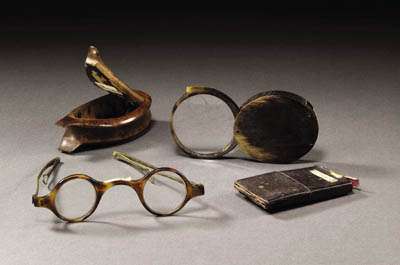Artifact: Visionary Art

These spectacles, auctioned in the fall by Sotheby's, are said to have belonged to J.M.W. Turner (1775-1851), the British painter whose wholly original treatment of luminosity late in his career inspired the Impressionists and revolutionized art. But British eye surgeon James McGill, a student of Turner's work, believes the glasses are evidence that Turner's late style was actually a result of his deteriorating vision. Turner "was painting exactly what he saw," McGill told Britain's Guardian.
Turner's vision has been debated before, but McGill's diagnosis is a specific one: The painter suffered some color blindness, affecting his reds and blues, and saw the world through cataracts. The latter would have resulted in his perceiving "exactly that effect of dazzling shimmering light we see in the paintings."
If true, such a diagnosis would hardly diminish Turner; it would make his achievements more impressive, because he'd have chosen to make his disability a part of his method. Yet despite a wealth of suggestive case studies -- Goya's work changed dramatically following a bout of apparent lead poisoning; Guy de Maupassant's syphilis may have affected his late writing -- the effort to understand art in terms of biology remains peripheral, and art remains locked in its Romantic cage.
If Turner did strive to make art from a clouded vision, his effort would have been one of intensifying intellectual engagement with the world, not of Romantic spiritual alienation from it. A Turner with fading sight would not have been trapped by biology; he would have been using his work to transcend it.


Show Comments (1)